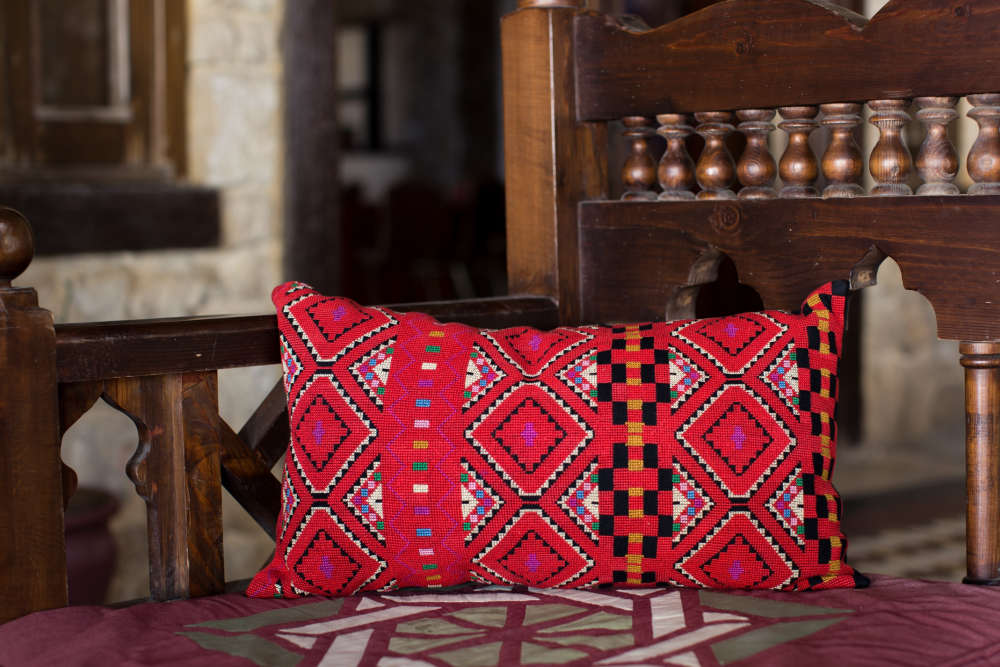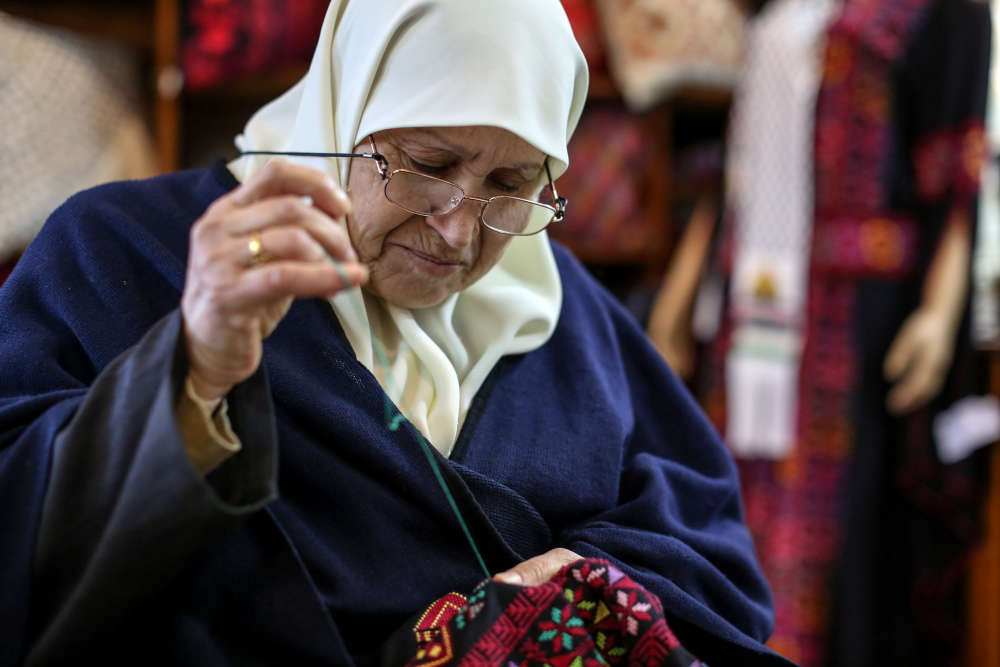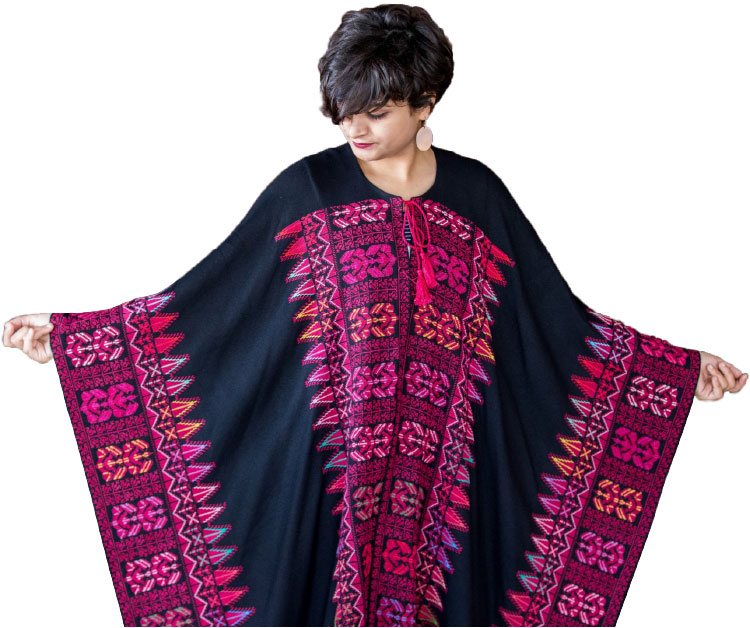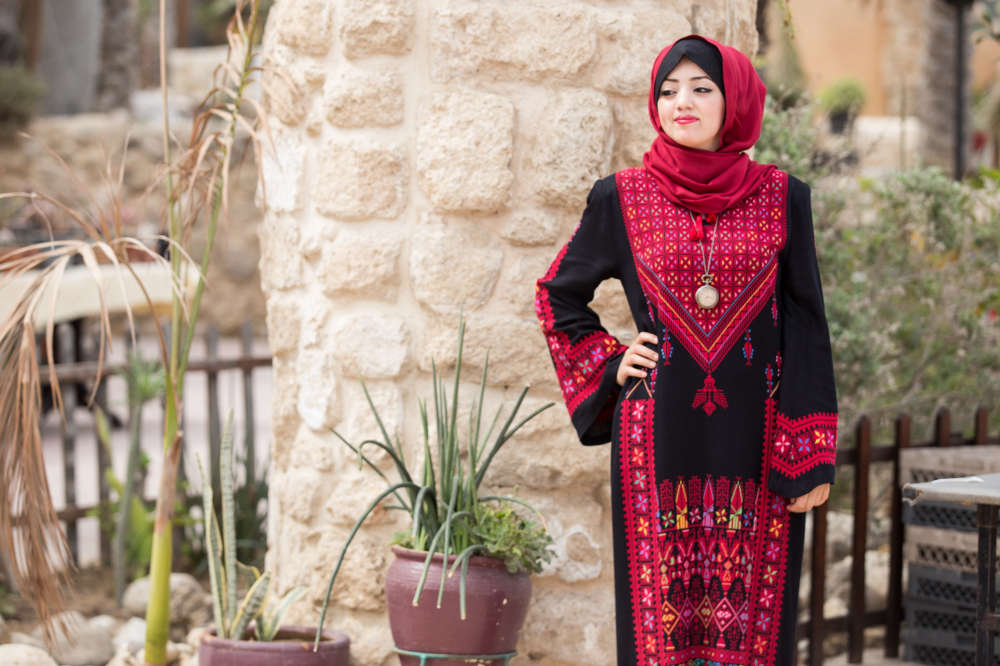By: Courtesy of Sulafa Embroidery Centre
UNRWA has been engaged in a range of activities to improve socio-economic conditions for Palestine refugees, in particular, Palestinian refugee women. One major initiative is the Sulafa Embroidery Centre, a project established by UNRWA in 1950 in Gaza to coordinate the production of traditional and contemporary Palestinian embroidered goods for sale locally and internationally. The project is an important opportunity for Palestinian refugee women to develop their skills and earn a market-driven income at home, thereby improving livelihoods for themselves and their families, and increasing their self-confidence and recognition within the household and the community. Employing a decentralized work structure, the center responds to women’s needs by providing them an opportunity to both generate an income as well as manage their family responsibilities. They also benefit from interaction with other artisans through regular social and work gatherings at community-based organizations.

Throughout Gaza, Sulafa is known for its high-quality embroidery. The center supports approximately 250 local artisans by commissioning traditional and contemporary embroidered goods. These items are 100% handmade and created by women of all ages. Embroidery instructors distribute work to the embroiderers and monitor product quality. Most of the work is done at home, but women also have the opportunity to gather at local community-based organizations where they can interact and learn with their peers and instructors. After the embroidery work is completed, products are finished by tailors in the center’s own sewing and finishing workshop.

Embroidery has been used to decorate cloth and clothing for centuries as a traditional way for women to express both individual skill and a connection to their own village and peers. It is an art that takes years to perfect. As a traditional Palestinian craft, the art of embroidery has been handed down through many generations and utilizes a variety of techniques to decorate clothing with motifs that are integral to the lives of many Palestinian women. Traditional patterns focus on geometric shapes that are based on items that are most familiar to Palestinian women in their daily surroundings. Depending on the region in Palestine, the patterns can include cypress trees, bunches of grapes, apple trees, chickens, pigeons, rainbows, roses, and flower pots, among other objects.
Behind every design is a name, and behind both there is a story. The embroidered products tell the stories of women who live in Gaza – women who bear the increasing burden of supporting their families. Although the work is labor-intensive and time-consuming, many Gazan women are willing to embroider mountains of stitches while also juggling household responsibilities in exchange for a wage that will support their families. And whereas the ability to earn a living for Palestine refugee women and their families is essential, they also desire to show their skill in making wonderful products despite the difficult political and socio-economic conditions they find themselves in. Poverty is a part of their lives; however, Gazan embroiderers are ambitious and intend to overcome the obstacles they face through determination and creativity.
The purchase of a Sulafa product allows Gazan women to support their families, which often rely on only one source of income.
Gazan embroiderers use two different stitches: the traditional cross-stitch and the Madani stitch, which is more common in the West Bank. The cross-stitch is relatively simple; however, making a large patterned item with this stitch requires a great deal of time, perseverance, consistency, and accuracy.
Sulafa stands out in its ability to produce modern designs while staying faithful to Palestinian identity. Palestinian traditions are maintained through the use of the cross-stitch and traditional color combinations, but innovation is fostered through products that are designed to utilize new color combinations, patterns, fabrics, and stitches. For example, new patterns inspired by Palestinian phrases and poems were recently created using Arabic calligraphy. In addition, Sulafa offers its customers flexibility in customizing product color combination, design, and dimension.
Through embroidery, Gazan women not only support their families but also tell about and keep alive their heritage.
Despite the limited business opportunities in Gaza, Sulafa seeks to actively promote its products locally and internationally through various marketing channels in order to sustain livelihood opportunities for women in Gaza and increase the sustainability of the center. A local shop in Gaza has recently been supplemented by an official website* that provides visitors with an overview of all available products and background information about the center. Furthermore, in order to promote and sell its products, Sulafa participates annually in local and international bazaars, such as the International Folk Art Market in Santa Fe, USA, where in 2017, it was selected by the International Folk Art Alliance as one of the five finalists for an artist award in the “Excellence in Community Impact” category.

Photo credit: Tamer Hamam, UNRWA, 2017.
In conclusion, Sulafa is more than just a way for women to earn a living. It is also a way to preserve the traditions and culture of embroidery within Palestinian society, to pass on these essential skills from one generation to the next, and to share an element of Palestinian culture with the rest of the world. Stories that depict life in Palestinian villages and communities are conserved in dresses, scarves, pillows, and many other items that are now known well beyond Gaza, making embroidery a way to tell about and remember Palestinian heritage.

Madani cushion cover, Small Colorful Roses design.
Photo credit: Tamer Hamam, UNRWA, 2017.


